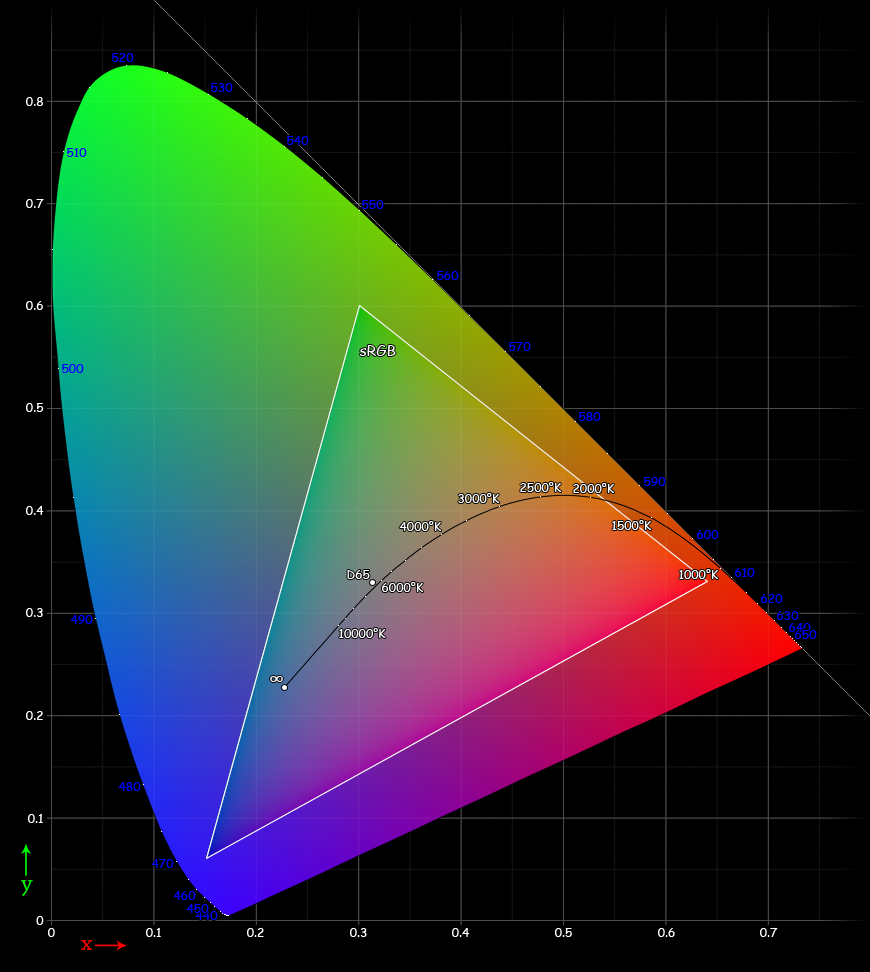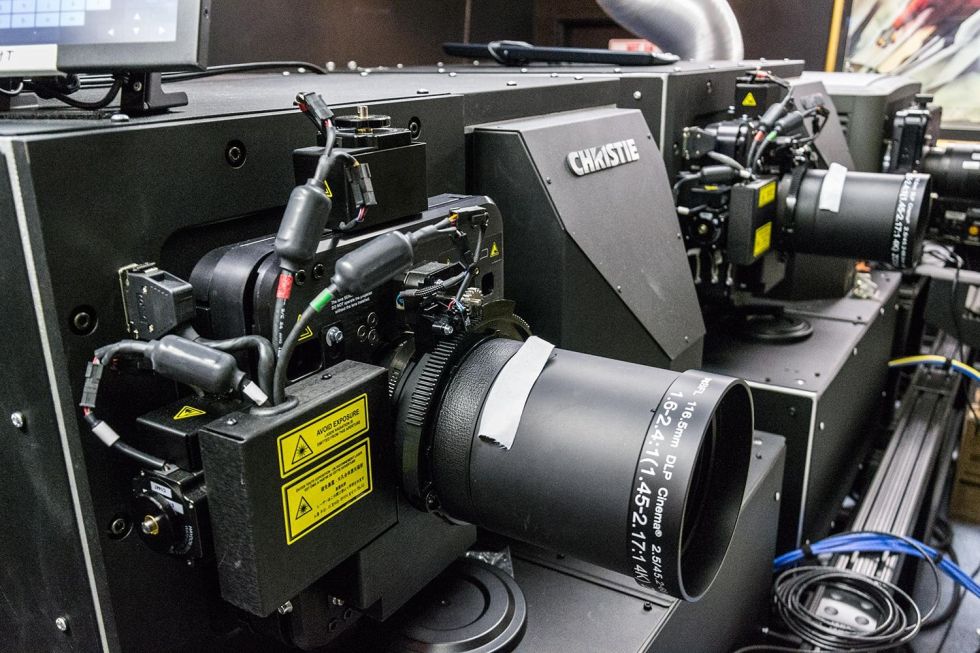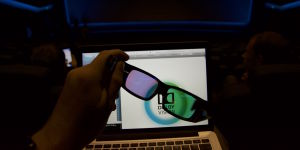Time for some colour theory
We all know that the eye has cells sensitive to red, green, and blue. So all colours are made up of different levels of those R, G, and B primary colours. The CIE chromaticity diagram (below) shows how this works; pick any three colours on the diagram, and you can get all of the intermediate colours that are inside the triangle between the chosen primary colours by mixing them at various levels.

The triangle shown in the image represents the sRGB / BT.709 colour space. BT.709 is the standard for HDTV and sRGB has been targeted in the computer industry and consumer digital cameras since the 1990s. However, only relatively recently have LCD computer monitors been able to display the entire sRGB colour space. Or exceed it, in the case of Apple's latest iMacs, which support the DCI-P3 colour space, (not?) coincidentally the colour space used for current digital cinema distribution.
Ideally, an RGB display device would use monochromatic primaries (R, G, and B primary colours) to create as wide a colour gamut as possible. Monochromatic light is light of a single wavelength and is perceived as the most saturated. In the CIE diagram, the rounded edge represents monochromatic colours from red (long wavelengths) to blue/violet (short wavelengths).
Cinemas, however, traditionally use enormous xenon bulbs to produce projection light. These xenon arc lights produce visible light of all wavelengths. A prism and/or filters are then used to create the red, green, and blue parts of the image. The problem is that the more saturated (closer to monochromatic) the primaries need to be, the more light that doesn't match that very specific colour gets filtered out and thus the dimmer the image will be. As a result, projectors (and LCD displays) that use a white light source can't really support the widest possible colour gamut.

Lasers to keep things safe
This problem is neatly solved by using lasers rather than a xenon bulb as the light source for the projectors. Lasers by their nature generate monochromatic light, so no light needs to be filtered out, allowing for more light to reach the screen using less electricity.
Using lasers makes the whole system safer, too. Perhaps the mental image you've had so far is three huge lasers in the projection booth that are ready to cut patrons in two should something go wrong. But that's not how it works. Laser-based projectors use an illumination of small lasers that are relatively cheap and easy to replace. Which is not exactly the case for the xenon bulbs used in large projectors; these may be rated at as much as 15,000 watts and their handling requires "the use of full-body protective clothing" (i.e., a bomb suit), as they may explode due to their high internal pressure.
Bright 3D without polarisation
The lasers also allow Dolby Vision to create a better 3D experience. Most 3D cinemas project the two images for each eye using circular polarisation in opposite directions. 3D glasses then use circular polarisation filters so that only the intended image reaches each eye. However, a bit of the image intended for the other eye tends to bleed through, especially with bright objects on a dark background, such as subtitles.

Dolby Vision uses a different system for 3D projection: the two projectors each use slightly different RGB primaries, and the 3D spectacles have notch filters that block the primaries used by the projector that projects the image intended for the other eye. This turned out to be very effective; I never saw any subtitle ghosting. However, I did find that the filters lose their effectiveness near the edge of the frame. This shouldn't be a problem when sitting in the back half of the theatre, but when sitting closer, the extreme edge of the screen may get a colour cast. Don't be alarmed by the apparent difference in colour between the two lenses when looking at anything other than the screen, though—the colours on the screen look the same through each eye.
Even with Dolby Vision, 3D reduces the brightness of the image, but because Dolby Vision starts at 31fL (106 nits) in 2D, it still delivers 14fL (48 nits) in 3D mode, more than most cinemas deliver in 2D. We were shown The Martian in 3D after the demos, and it was about as bright as when I saw it in 2D in a regular cinema a few weeks earlier.
Just like IMAX-with-laser, Dolby Vision is currently available at only a handful of cinemas around the world (and, again like IMAX, only a small number of films have been mastered/tweaked for Dolby Vision). In Europe, the only publicly accessible Dolby Vision cinemas are JT Hilversum and JT Eindhoven; in the US there are a few more locations (which, rather excitingly, are showing the new Star Wars film in full Dolby Vision + Atmos).
(Want more movie projection with lasers? Check out our writeup about watching IMAX with laser projection.)
Listing image by Iljitsch van Beijnum
reader comments
68